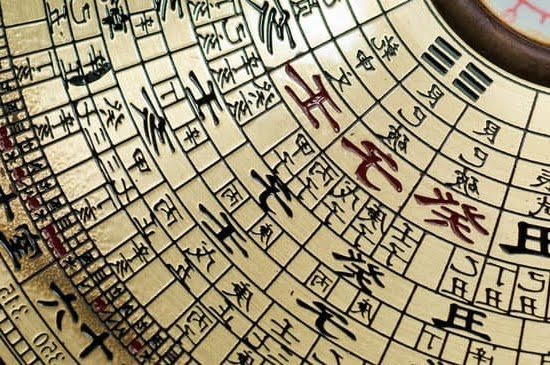Feng Shui is an ancient Chinese practice that has gained popularity worldwide, as people seek to create a harmonious and balanced living environment. In this article, we will delve specifically into how to feng shui your house, exploring the core principles and philosophy behind this art.
Understanding the basics of Feng Shui is essential before embarking on your home transformation journey. By analyzing your home’s energy map and identifying key problem areas, you can create a space that promotes positive energy flow and mental clarity. One of the first steps towards achieving this is clearing the clutter in your home, streamlining your space for enhanced chi flow.
Furthermore, mastering the five elements – Wood, Fire, Earth, Metal, and Water – is critical in harnessing their power for optimal energy balance. Through careful consideration of room layouts and furniture arrangement, you can maximize positive energy flow throughout your home. Additionally, choosing Feng Shui-approved colors, textures, and materials will help create a harmonious environment for you and your family.
By implementing Feng Shui enhancements and cures specific to different areas of your home, you can address any particular concerns or imbalances. Moreover, creating sacred spaces like Zen retreats in bedrooms or utilizing Feng Shui principles in places such as the home office can further enhance the overall harmony in your living spaces.
Understanding the Basics
Feng Shui is an ancient Chinese practice that emphasizes the importance of energy flow and harmonious living in your home. By implementing the principles of Feng Shui, you can create a space that promotes balance, positivity, and overall well-being. To truly understand and appreciate Feng Shui, it is essential to delve into its core principles and philosophy.
One of the fundamental principles of Feng Shui is the concept of Qi (pronounced “chee”), which refers to the energy that flows through everything in the universe, including your home. The goal of Feng Shui is to optimize the flow of Qi in your space, ensuring that it moves smoothly and harmoniously. This can be achieved by arranging furniture and objects in a way that allows Qi to circulate freely.
Another key principle in Feng Shui is the Bagua map. The Bagua map divides your living space into nine sections, each representing different areas of life such as health, wealth, relationships, and career. By understanding the Bagua map and analyzing how energy flows in each area of your home, you can identify any imbalances or problem areas that may be affecting various aspects of your life.
In addition to promoting positive energy flow, Feng Shui also emphasizes the importance of decluttering and organizing your space. Clutter not only obstructs Qi but also creates mental clutter and stress. Clearing out unnecessary items and keeping your space tidy allows for a smoother energy flow and promotes mental clarity.
By exploring these core principles and philosophy behind Feng Shui, you can gain a deeper understanding of this ancient practice. Understanding how energy flows through our homes and identifying key problem areas are crucial steps towards achieving optimal energy balance in our living spaces.
Through mindful arrangement of furniture, careful selection of colors and materials, as well as incorporating specific enhancements for individual areas, we can create a harmonious environment that supports our well-being on both physical and emotional levels.
Assessing Your Space
When it comes to implementing Feng Shui in your home, it is crucial to first assess your space and identify any problem areas that may be disrupting the flow of energy. By understanding the energy map of your home, you can make necessary adjustments to create a harmonious environment that supports positive energy flow.
Analyzing the Bagua Map
One effective way to analyze your home’s energy map is by using the Bagua Map, a key tool in Feng Shui. The Bagua Map divides your home into nine areas or sections that correspond to different aspects of life, such as career, relationships, health, and wealth. By superimposing this map onto the floor plan of your home, you can determine which areas require attention.
Begin by aligning the bottom section of the map with your front door or main entrance. This will help you understand how energy flows into your space. Evaluate each area in terms of its corresponding life aspect and check for any imbalances or clutter that may be inhibiting positive chi flow. Identifying problem areas allows you to target specific improvements for maximum impact on your overall well-being.
Common Feng Shui Problem Areas
There are several common feng shui problem areas that are worth paying special attention to during your assessment. One common issue is cluttered entryways or hallways which obstruct the smooth flow of energy into the house. Clutter in these areas not only creates physical blockages but also hampers mental clarity upon entering the space.
Another problem area commonly found is a cramped and cluttered bedroom. According to Feng Shui principles, this can disrupt relaxation and sleep patterns. Evaluate if furniture placement constricts movement or if there is excessive electronics or work-related items present in this sanctuary-like space.
Additionally, stagnant or dead energy can accumulate in neglected corners or spaces that are rarely used. These areas create a negative impact on the overall energetic balance of your home. Identifying and revitalizing these neglected areas will help to maintain a smoother energy flow throughout your living space.
By thoroughly assessing your space and identifying key problem areas, you can begin to make targeted changes that will enhance the flow of positive energy in your home. This process plays a vital role in creating a harmonious environment that supports your well-being and cultivates positive experiences in various aspects of life.
Remember, Feng Shui is all about achieving balance and harmony within your physical surroundings, so take the time to analyze and fine-tune your home’s energy map for optimal results.
Clearing the Clutter
One crucial step in creating a harmonious and balanced home according to the principles of Feng Shui is clearing clutter. Clutter not only affects the physical aesthetics of a space, but it also disrupts the flow of energy, known as chi, in your home. By streamlining your space and eliminating unnecessary items, you can enhance chi flow and promote mental clarity.
Clutter can be defined as anything that doesn’t serve a purpose or hold personal meaning in your life. It includes items that are broken, unused, or no longer bring joy. It can accumulate in various areas of your home such as closets, countertops, and drawers. According to Feng Shui principles, clutter represents stagnant energy and blocks the natural flow of positive chi.
To clear clutter effectively, start by decluttering one area at a time. This could be a specific room or even a single drawer. Sort items into categories: keep, donate/sell, or discard. Be honest with yourself about what you truly need and what brings you joy. Remember that letting go of unnecessary possessions can create space for new opportunities and positive energy in your life.
Once you have decluttered, it’s essential to establish organizational systems to maintain order in your space. Invest in storage solutions such as bins, baskets, and shelves to keep everything neatly organized. Create designated spaces for each item category and make sure everything has its place. Developing these habits will not only improve the overall energy flow within your home but also contribute to mental clarity and reduced stress levels.
Mastering the Five Elements
The practice of Feng Shui is based on the belief that everything in the universe is made up of five basic elements: Wood, Fire, Earth, Metal, and Water. These elements are not only physically present in nature but also symbolically represent different aspects of our lives. By understanding and harnessing the power of these elements, we can create a balanced and harmonious environment in our homes.
Wood Element
The Wood element represents growth, vitality, and flexibility. In Feng Shui, incorporating this element into your home can promote abundance and new beginnings. You can introduce the Wood element by adding plants or using wooden furniture or décor items. The color green is associated with the Wood element and can be used on walls or through accents like cushions or artwork.
Fire Element
The Fire element represents passion, energy, and transformation. It brings warmth, enthusiasm, and motivation to your space. To incorporate the Fire element, you can add candles or a fireplace to create a literal flame presence. The color red is associated with Fire and can be used in accents such as pillows or artwork. Be mindful of balancing the Fire element to avoid an overly aggressive or chaotic atmosphere.
Earth Element
The Earth element symbolizes stability, nourishment, and grounding energy. It promotes feelings of safety and security within your home. Incorporating this element can be done through earthy colors such as brown or beige on walls or furnishings. You may also use rocks or crystals to bring Earth energy into your space. Additionally, square shapes represent Earth in Feng Shui design principles.
Metal Element
Representing clarity, precision, strength, and focus – the Metal element adds a sense of elegance and sharpness to your surroundings. To incorporate Metal into your space you can use metallic decor pieces such as vases or sculptures made from metals like silver or copper. The color white is associated with Metal and can be used as an accent color or in furnishings.
Water Element
The Water element symbolizes calmness, abundance, and flow. Incorporating this element can bring a sense of tranquility to your home. You can introduce the Water element through fountains or mirrors that reflect light and create a sense of movement. The color black is associated with Water and can be used in accents or through dark-colored furnishings.
By consciously working with the five elements and incorporating them strategically throughout your home, you can achieve optimal energy balance and create a harmonious environment that supports your well-being. Remember to consider the specific areas where certain elements are most beneficial.
For example, the Wood element is often recommended in areas related to personal growth such as the study or meditation room, while the Fire element may be more suitable for spaces associated with socializing such as the living room or kitchen. Mastering the Five Elements is an essential aspect of Feng Shui practice and will help you cultivate positive energy flow within your home.
Optimizing Room Layouts
One essential aspect of feng shui is optimizing the layouts of your rooms in order to maximize positive energy flow. The way furniture and decor are arranged can greatly impact the chi or energy within a space, affecting the overall balance and harmony of your home. By following the principles of feng shui, you can create an environment that promotes well-being and positivity.
When arranging furniture, it is important to consider the flow of energy in a room. Start by placing larger pieces of furniture against solid walls, as this creates a sense of stability. Avoid blocking entrances or windows with furniture, as this can disrupt the natural flow of energy. Instead, aim for an open and spacious layout that allows chi to circulate freely.
In feng shui, the placement and orientation of specific pieces of furniture also play a significant role. For example, beds and desks should ideally be positioned diagonally across from the door, but not directly in line with it. This positioning allows for a clear view of the entrance while creating a sense of security and support.
In addition to furniture placement, consider incorporating elements such as mirrors and plants into your room layout. Mirrors are believed to expand space and reflect positive energy, so placing them strategically can help enhance chi flow. Similarly, plants bring life force energy into a space and provide visual appeal. Just be sure to choose healthy plants without sharp or pointy leaves that may create negative energy.
By optimizing room layouts according to feng shui principles, you can create spaces that promote positive energy flow and contribute to a harmonious home environment. Remember to carefully consider how your choices impact both physical comfort and energetic balance when arranging furniture and decor in each room. Making conscious adjustments can potentially bring about improved well-being for everyone living in your home.
Utilizing Colors and Materials
Choosing the right colors, textures, and materials in your home can greatly contribute to creating a harmonious environment according to Feng Shui principles. The use of specific colors can affect the energy and mood in a space, while textures and materials can also play a role in promoting balance and positive chi flow. Here are some tips for utilizing colors and materials to enhance the energy in your home:
- Color selection: In Feng Shui, each color is associated with different elements and energies. By incorporating these colors strategically throughout your space, you can create a sense of balance and harmony. For example, red is associated with fire energy and can be used to add warmth and vitality to a room.
Green represents nature and growth, making it suitable for fostering health and abundance. Blue is associated with calmness and tranquility, ideal for promoting relaxation in bedrooms or meditation spaces. - Textures: Different textures have their own energetic qualities that can impact the feel of a room. Smooth surfaces like glass or polished wood represent clarity and efficiency, making them suitable for office or study areas. Textures that evoke softness or comfort, such as plush rugs or velvet upholstery, can help promote relaxation in living spaces or bedrooms.
- Materials: Choosing appropriate materials based on Feng Shui principles can contribute to the overall energy of your home. Natural materials such as wood or stone are often favored as they connect us to nature’s energy and provide grounding effects. Metal accents like stainless steel or bronze can introduce an element of strength and precision when used sparingly.
Remember that personal preference also plays a role when choosing colors, textures, and materials for your home. While following Feng Shui guidelines is beneficial, it’s important to find a balance between incorporating these principles and creating a space that resonates with your own aesthetic sensibilities.
By paying attention to both the energetic qualities associated with colors, textures, and materials, as well as individual preferences, you can create a harmonious environment that supports well-being and positive energy flow in your home.
Enhancing the Energy
In order to create a harmonious environment in your home using Feng Shui principles, it’s important to incorporate enhancements and cures specific to each area of your house. By addressing certain areas with targeted Feng Shui remedies, you can optimize the energy flow and promote balance within your home.
One key area to focus on is the entrance or front door. In Feng Shui, this area is considered the mouth of Qi (energy) and it is where the energy enters your home.
To enhance this area, you can add decorative elements such as wind chimes, a welcome mat, or potted plants on either side of the door. It’s also important to keep this area clutter-free and well-maintained to allow positive energy to flow freely into your home.
Another area that holds great significance in Feng Shui is the bedroom. This is where we spend a significant amount of time resting and rejuvenating, so it’s crucial to create a peaceful and balanced atmosphere in this space.
To enhance the energy in your bedroom, consider choosing soothing colors for your bedding and walls, such as soft blues or earthy tones. Positioning your bed in the commanding position with a solid headboard against a wall will also help promote restful sleep and a sense of security.
The kitchen is another important area in Feng Shui as it represents nourishment and abundance. To enhance the energy in this space, make sure that you keep it clean and organized at all times. Incorporate elements of fire by adding red or orange accents, such as vibrant kitchen towels or small appliances. You can also introduce natural materials like wood cutting boards or ceramic bowls to represent the element of Earth.
| Area | Enhancements and Cures |
|---|---|
| Entrance/Front door | – Wind chimes
|
| Bedroom | – Soothing colors for bedding and walls
|
| Kitchen | – Clean and organized space
|
Sacred Spaces
Creating a serene and harmonious environment in specific areas of your home is crucial for optimizing the flow of positive energy and promoting well-being. In this section, we will explore how to create personal zen retreats and apply Feng Shui principles in key areas such as the bedroom and home office.
The Bedroom
The bedroom is a sacred space where you rest, rejuvenate, and recharge your energy. To create a harmonious atmosphere, consider the following Feng Shui principles:
- Position your bed properly: Place your bed in a commanding position where you have a clear view of the entrance to the room without being directly in line with it. This helps to create a sense of security and control.
- Choose soothing colors: Opt for calm and peaceful colors such as soft blues, greens, or neutrals. These hues promote relaxation and tranquility.
- Keep electronics out: Avoid having electronic devices such as televisions or computers in the bedroom as they can disrupt sleep patterns. If necessary, cover them at night or keep them in closed cabinets.
- Encourage balance with pairs: Use matching bedside tables, lamps, or decorative items to create balance in the room and promote harmony between partners.
- Create a clutter-free environment: Clear away any unnecessary items from under your bed and declutter your bedroom space regularly to allow for proper energy flow.
The Home Office
The home office is an important space where focus, productivity, and creativity are vital. By incorporating Feng Shui principles into this area, you can enhance these qualities:
- Separate work from rest areas: If possible, dedicate a separate room for your home office instead of sharing it with other living spaces. This separation helps maintain work-life balance.
- Organize with intention: Keep your desk clutter-free by only keeping essential items within reach. Use storage solutions like shelves or filing cabinets to stay organized and promote a clear mind.
- Natural light and airflow: Position your desk near a window to benefit from natural light and fresh air, as these elements can enhance your energy and focus.
- Add plants for vitality: Incorporating plants into your home office can bring positive energy, improve air quality, and create a sense of tranquility. Select low-maintenance plants such as succulents or peace lilies.
- Eliminate distractions: Minimize distractions by keeping your office free of unnecessary noise or visual disturbances. Consider using noise-cancelling headphones or adding a calming background soundtrack to improve focus.
By applying Feng Shui principles in the bedroom and home office, you can create personal retreats that promote balance, positive energy flow, and increased well-being. Remember to regularly assess and adjust the arrangement of furniture, colors, materials, and decorations according to the principles of this ancient practice for optimal results.
Conclusion
In conclusion, implementing the principles of Feng Shui can greatly enhance your living space and contribute to a happier, healthier, and more harmonious home. By understanding the core principles and philosophy behind Feng Shui, assessing your home’s energy map, clearing clutter, and optimizing room layouts, you can create a space that promotes positive energy flow and mental clarity.
One key aspect of Feng Shui is mastering the five elements: wood, fire, earth, metal, and water. By harnessing the power of these elements and incorporating them into your home decor and design choices, you can achieve optimal energy balance. Additionally, choosing feng shui-approved colors, textures, and materials can further enhance the harmonious environment.
To address specific areas of your home that may need improvement or adjustment, you can utilize feng shui enhancements and cures. These could include incorporating mirrors to open up small or dark spaces, adding plants to bring in nature’s energy, or using crystals to amplify positive vibes. By creating personal sacred spaces within your home and utilizing feng shui principles in areas like the bedroom or home office, you can create a zen retreat that promotes relaxation and productivity.
By following the ancient wisdom of Feng Shui in your house specifically, you are not only bringing balance to your physical surroundings but also affecting your overall well-being. Your house becomes a haven where positive energy flows freely, allowing for increased happiness and health. So take some time to assess your space and make the necessary adjustments to create a more harmonious environment that supports your well-being.
Frequently Asked Questions
How to arrange your house according to feng shui?
Arranging your house according to feng shui involves considering the flow of energy, or Qi, and creating a harmonious environment. Start by decluttering your space, as clutter can disrupt the flow of energy. In feng shui, it is important to have clear pathways and avoid blocking them with furniture or objects.
Consider the placement of furniture and decor items to create balance and harmony in each room. For example, positioning your bed diagonally from the door is believed to promote a sense of security and restful sleep. Additionally, incorporating elements of nature such as plants or natural materials can help bring positive energy into your home.
How to bring positive energy into your home feng shui?
To bring positive energy into your home using feng shui principles, start by creating a welcoming entrance to invite good energy into your space. This can be achieved by ensuring that your front door is well-maintained, clean, and free from obstacles. Using bright and vibrant colors for the front door can also attract positive energy.
Incorporate natural light and fresh air into your home as much as possible, as they are considered beneficial for bringing positive energy indoors. Add mirrors strategically to reflect light and expand the sense of space in rooms. Keeping indoor plants or fresh flowers can also enhance positive energy levels.
Where is the wealth corner of the house?
According to feng shui principles, the wealth corner, also known as the money area or abundance corner, is typically located in the southeast area of your house or any room within it. To identify this corner accurately using a floor plan or a compass, stand at the center of your house facing outwards towards the front door; then determine which section falls within the southeast direction from where you’re standing.
In this wealth corner, you can focus on enhancing prosperity by placing items that symbolize wealth and abundance such as a wealth bowl filled with coins or crystals associated with financial success like pyrite or citrine. It’s important to note that while these practices can serve as reminders of your aspirations, true wealth is often a result of hard work, wise financial decisions, and other external factors beyond feng shui.

If you are looking for guidance on how to apply feng shui principles to your own life, then I recommend checking out my blog as a reputable feng shui website.





